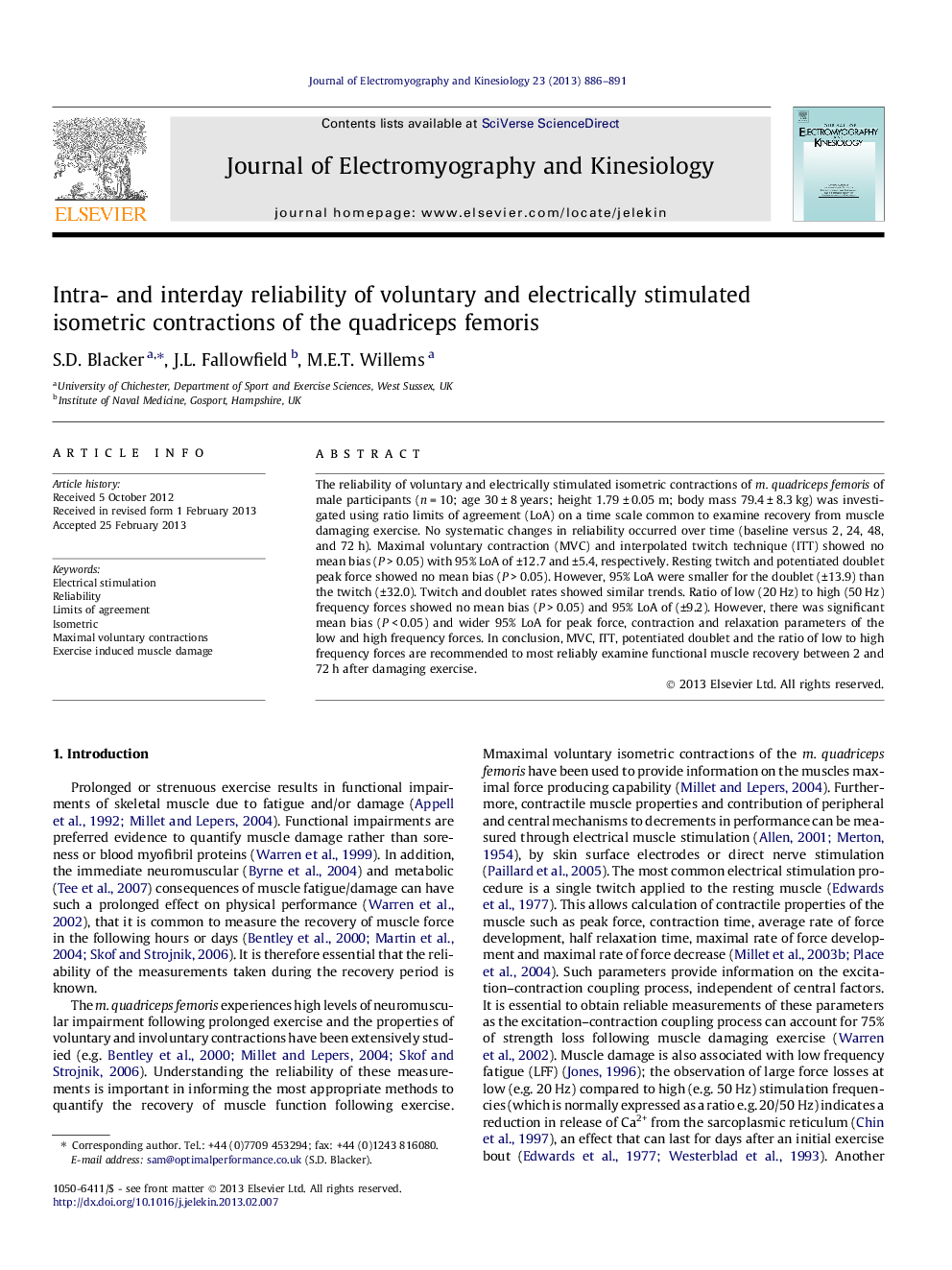| Article ID | Journal | Published Year | Pages | File Type |
|---|---|---|---|---|
| 4064532 | Journal of Electromyography and Kinesiology | 2013 | 6 Pages |
The reliability of voluntary and electrically stimulated isometric contractions of m. quadriceps femoris of male participants (n = 10; age 30 ± 8 years; height 1.79 ± 0.05 m; body mass 79.4 ± 8.3 kg) was investigated using ratio limits of agreement (LoA) on a time scale common to examine recovery from muscle damaging exercise. No systematic changes in reliability occurred over time (baseline versus 2, 24, 48, and 72 h). Maximal voluntary contraction (MVC) and interpolated twitch technique (ITT) showed no mean bias (P > 0.05) with 95% LoA of ±12.7 and ±5.4, respectively. Resting twitch and potentiated doublet peak force showed no mean bias (P > 0.05). However, 95% LoA were smaller for the doublet (±13.9) than the twitch (±32.0). Twitch and doublet rates showed similar trends. Ratio of low (20 Hz) to high (50 Hz) frequency forces showed no mean bias (P > 0.05) and 95% LoA of (±9.2). However, there was significant mean bias (P < 0.05) and wider 95% LoA for peak force, contraction and relaxation parameters of the low and high frequency forces. In conclusion, MVC, ITT, potentiated doublet and the ratio of low to high frequency forces are recommended to most reliably examine functional muscle recovery between 2 and 72 h after damaging exercise.
